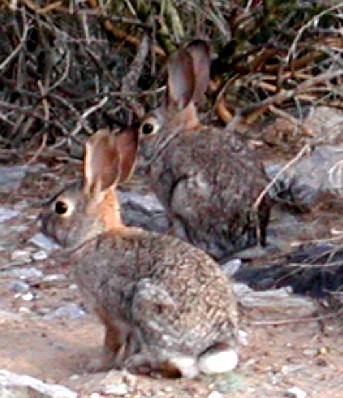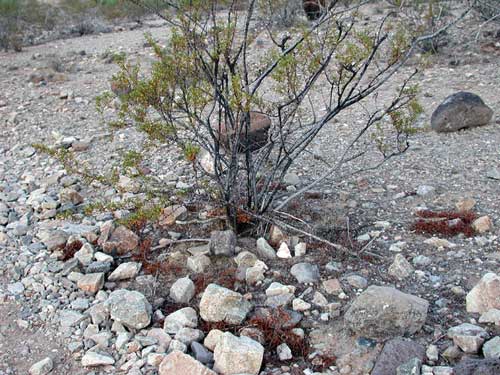Audubon's Cottontail
Desert Cottontail
Sylvilagus audubonii
The Desert Cottontail thrives in the Sonoran Desert, testament to its adaptability. Creosote Bush is the most abundant plant across much of the southwestern USA deserts, however, the abundance of noxious chemicals in the leaves makes it unpalatable or even deadly toxic to most herbivores. The Desert Cottontail deals with creosote's toxic brew by consuming only limited quantities at one time and then only the least defended twig sections it can find.
Evidence of this selective herbivory can be found during drought periods as sprigs of dry, brown creosote leaves deposited around the periphery of shrubs after the less toxic twig portions have been eaten. What is the method the cottontail uses to discriminate toxic from safe portions? (Possible science project or thesis!)
This Creosote Bush (Larrea tridentata) was observed in Phoenix Mountain Preserve, Arizona, and is also hosted at Wikimedia where there are additional images of Cottontail Rabbits. The largest sprigs of dead, brown creosote leaves are at front center and off to the right. They are the leftovers after the rabbits have eaten sections of stem with lower concentrations of toxic phytochemicals.
More Information/References:
- The Mammals of Texas - Online Edition
- Animal Diversity Web
- ITIS Taxonomic Report
- Google Images
- Google Scholar Literature Search
- Reference: Mammals of Arizona (1986), D. F. Hoffmeister, Univ. of Arizona Press.

